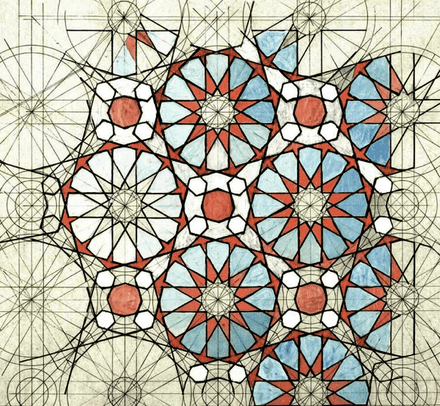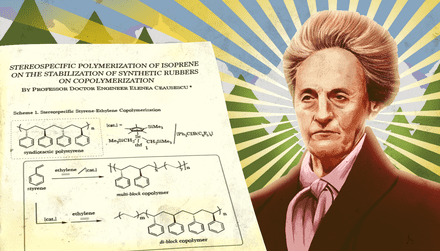Google Doodles are those alternative versions of the Google logo to celebrate holidays, events, anniversaries and the lives of famous artists, pioneers and scientists. Since 1998, more than 2000 different Doodles have appeared on the Google homepage around the world. Not every Doodle gets displayed in every country, which is why some of us have missed out on some of the best ones.
Google has celebrated the birthdays of some fascinating female scientists over the past years. We have decided to dedicate this blog post to some of them, to get a chance to get to know some of the most inspiring women in science a little better.
Katsuko Saruhashi - a pioneering geochemist and feminist

Saruhashi’s groundbreaking research focused on acid rain, the dangers of radioactivity spread through oceans, and carbon dioxide levels in seawater
Saruhashi (1920–2007) was inspired by the flight of raindrops at an early age. In primary school, she was watching raindrops slide down a window and wondered what made it rain. Later, she was the first woman to earn a PhD from the University of Tokyo in 1957. Saruhashi is renowned for her groundbreaking research as a geochemist. She was the first to determine carbonic acid levels based on temperature, pH level, and chlorinity. Her methodology has proved invaluable to oceanographers everywhere, and “Saruhashi’s Table” was named after her. She also developed a technique to trace the travel of radioactive fallout across the oceans. Her findings on how radioactivity spreads led to restrictions on oceanic nuclear experimentation in 1963.
Saruhashi was deeply committed to inspiring young women to study science. She was the first woman elected on the Science Council of Japan in 1980, and established the Saruhashi Prize in 1981, recognizing female scientists for distinguished research in natural sciences. She died in 2007 of pneumonia.
On March 22, 2018, Google honored Katsuko Saruhashi on her 98th birthday.
Carrie Derick - Canada’s first female professor
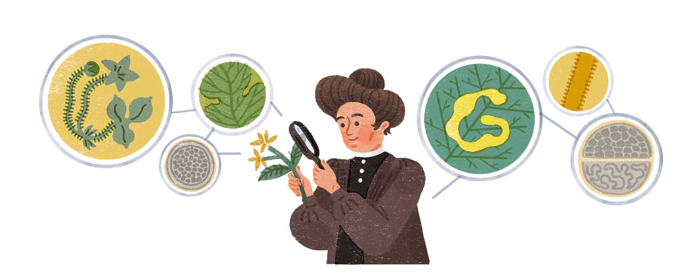
Derick’s work as botanist and geneticist was undisputed - and yet her way to professorship was a long fight
Derick enrolled in McGill’s Faculty of Arts in 1889. After her graduation she went on to attend the University of Bonn in Germany, where she completed enough research to earn a Ph.D in 1901, but was not awarded an official doctorate since the University did not give women Ph.D. degrees. Derick persevered, continuing in her career as a botanist and geneticist and in 1912, became Canada’s first female professor at her alma mater, McGill University.
Throughout her life, she was an advocate for women’s rights and causes. By the time she retired from McGill University 40 years later, she had widened the professional and occupational fields for Canadian women, improved the social and educational aspects of their lives, and helped them to gain political rights.
Carrie Derick’s 155th birthday was on January 14, 2017. Her Doodle only appeared in Canada on that day, but we believe it has deserved to be shared with the world.
Annie Jump Cannon - Pioneer in astronomy and suffragist
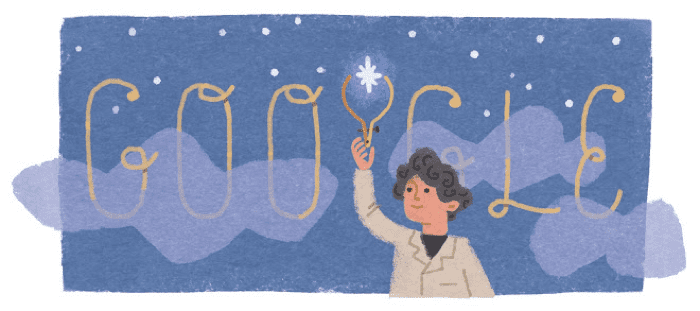
With Edward Charles Pickering, she made the first serious attempt to classify stars based on their temperatures and spectral types
Cannon studied physics and astronomy at Wellesley College before graduating in 1884. She began her career as one of several dozen female “computers” – then defined as people who did calculations – hired by Edward Charles Pickering, director of the Harvard College Observatory, to analyze photographic plates of starts. With Edward C. Pickering, she is credited with the creation of the Harvard Classification Scheme, which was the first serious attempt to organize and classify stars based on their temperatures and spectral types. Her system — ranking stars as O, B, A, F, G, K or M, with “O” being the hottest stars and “M” the coolest (the sun is a “G” star) — is still used today. She also created a saying — “Oh! Be A Fine Girl – Kiss Me!” — to help astronomers remember the letter sequence. Cannon was nearly deaf throughout her career.
During her career, Cannon helped women gain acceptance and respect within the scientific community. One part of her legacy is an “Annie Jump Cannon Award in Astronomy” given by the American Astronomical Society every year to a woman who received her Ph.D no more than five years ago. Cannon herself established the fund out of prize money she won in her lifetime.
Google celebrated Cannon’s 151st birthday on December 11, 2014 with a Doodle in the US.
Dorothy Hodgkin - pioneer in X-ray crystallography
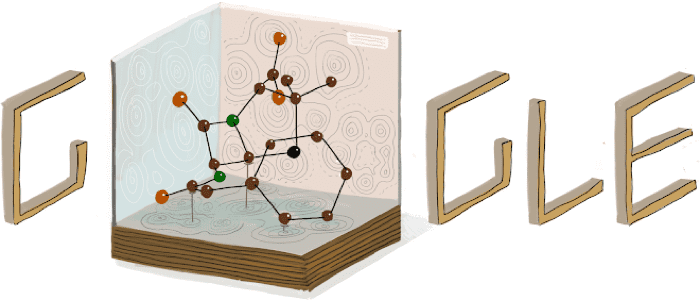
Scientist with a political stance: Winner of the Nobel Prize in 1965 and the Lenin Peace Price of the Soviet Union in 1987
X-ray crystallography is a 100 year old technique in chemistry which has revolutionized the way we understand the structure of the universe on a molecular level. Dorothy Hodgkin was awarded the Nobel Prize in 1964 for her work on uncovering the complex structure of Penicillin G (the model in the Doodle) and vitamin B12. In 1969, after 35 years of work, Hodgkin was able to decipher the structure of insulin.
Hodgkin developed a passion for chemistry from a young age. At the age of 18 she started studying chemistry at Somerville College, Oxford University. Later the college appointed her its first fellow and tutor in chemistry in 1936. In the 1940s, one of her students was Margaret Roberts, the future Prime Minister Margaret Thatcher, who installed a portrait of Hodgkin in Downing Street.
Hodgkin’s mentor Professor John Desmond Bernal was an open and vocal member of the Communist Party and faithful supporter of the Soviet regime until its invasion of Hungary. Hodgkin was never a communist, but had a concern about social inequalities and a determination to do what she could to prevent armed conflict and, in particular, the threat of nuclear war.
Dorothy Hodgkin’s 104th birthday was on May 12, 2014. Google celebrated it with this Doodle.
Eva Ekeblad - a countess who brought the potato to the people

Her insights on starch from potatoes helped reduce famine in years to come
Ekeblad was a Swedish countess, salon hostess, agronomist and scientist. On top of that, she was a mother of 7 children.
In 1746, she wrote to the Royal Swedish Academy of Sciences on her discoveries of how to make flour and alcohol out of potatoes. Her work turned potatoes, initially only cultivated in the greenhouses of the aristocracy, into a staple food in Sweden, and increased the supply of wheat, rye and barley available for making bread, since potatoes could be used instead to make alcohol. This helped reduce the frequency of famines. She also discovered a method of bleaching cotton textile and yarn with soap in 1751.
For her scientific and delicious work, Ekeblad became the first woman elected to the Royal Swedish Academy of Sciences in 1748. She was truly a pioneer – the next woman recognized in those ranks would come 203 years later.
Her Doodle appeared in many countries worldwide on July 10, 2017, for her 293rd birthday.

